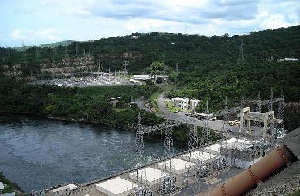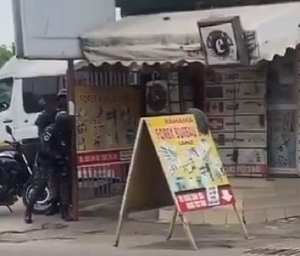The country’s power producers have had to ramp up thermal power production to bridge the shortfall in hydro power generations as a result of poor rains and shortage of natural gas.
The water level in the Akosombo Dam has been reducing in recent months at a rate of .05 feet. However, onset of rains in the north of the country has reduced the rate of fall to .02 feet, as operators await more rains up north to feed tributaries of the River Volta.
The water level in the Akosombo reservoir has dropped to about 237ft. However, the station is currently running four turbines as a result of the huge deficit in power generation brought on by the complete shutdown of the Atuabo Gas Processing Plant -- due to gas compression system challenges on the FPSO Kwame Nkrumah operated by Tullow Ghana.
The hydro station currently runs on four turbines despite the drop in water level to 237feet -- two feet above the minimum operating level of the dam.
Ebo Amoah, Manager of the Electrical Department of the VRA, last week acknowledged the situation as a major concern to the Authority, but remained upbeat about the level improving after the onset of rains in the north. “The normal water level needed for all six turbines to run efficiently is 278ft, and the minimum level the dam should operate is at 235ft.”
The largest power producer has recently taken delivery of a cargo of crude to power installed thermal plants as the Kpong Thermal Plant (KTPP) and Tema Station 3 expansion project is also scheduled to come onstream by November.
The combined generation from the two projects is 258Megawatts – Tema Station 3 expansion project (38MW) and KTPP (22MW). This is expected to reduce the current deficit from about 600MW to 350MW.
Francise Yaw Agbenyo, the Project Manager, said the US$200m project will be operational in November. “We will do a reliability check and performance testing before we go commercial in November 2015. Each of the two plants has an installed capacity of 110MWH. So the two will give us 220MWH.”
Crude oil imports by the VRA was estimated to be over 5.17million barrels. One cargo of crude is estimated at 450,000 barrels. The Authority has had to import more crude this year to power its thermal plants due to a shortfall in hydro generation.
The Authority estimates that a turbine consumes about 5,000 barrels of crude in a day. This requires about US$50million every three weeks to purchase crude for powering thermal plants in the country.
Financing of the crude oil purchases has however been very challenging for the Authority, given that its tariff covers just about 60% of operational cost -- with recently announced tariff increases by the Public Utilities Regulatory Commission deferred.
B&FT sources say government has been funding the purchases of crude oil to power thermal plants as the power rationing intensifies following the Atuabo Gas Plant shutdown. VRA has also had to rely on private banks in the country to raise capital to fund the oil purchases.
Gas supply challenges
With Atuabo Gas Processing Plant completely shut down, the only other source of gas is from Nigeria via the West African Gas Pipeline. Gas supply last week reached 91 MSCF -- one of the highest in recent times.
However, this has remained erratic -- falling under 40MSCF in some instances.
The unreliability of Nigerian gas and changing rainfall pattern means that going forward the reliability of Ghana’s gas supply offshore Cape Three Points must be maintained, while we edgily await the arrival of the long-promised emergency power barges in September.
Business News of Tuesday, 28 July 2015
Source: B&FT

















